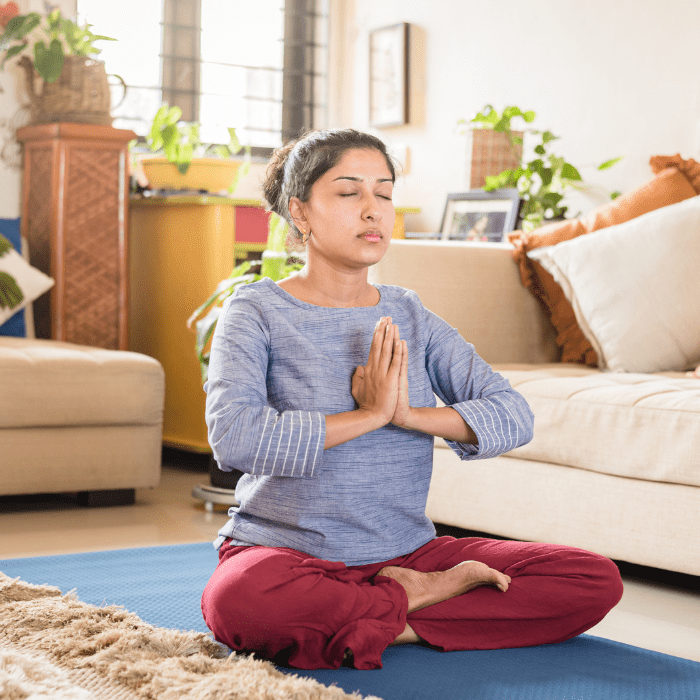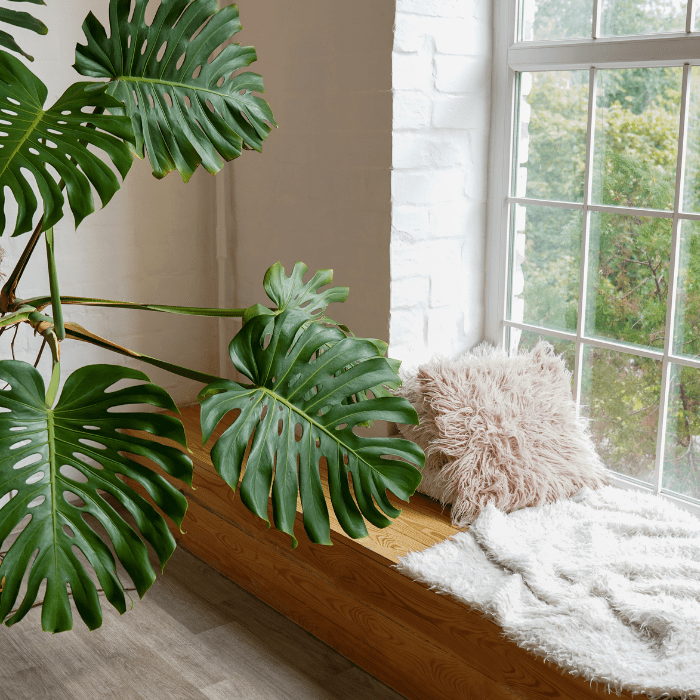Here’s a little transparency: Our website contains affiliate links. This means we may receive a small commission if you click and make a purchase. Don’t worry—there’s no extra cost to you. It’s a simple way you can support our mission to bring you quality content. Learn more at the Affiliate Disclosure page.

Transform Your Home into a Haven of Inner Peace:
A Step-by-Step Guide to Creating a Meditation Space That Nurtures Mindfulness and Serenity
Finding inner peace and calm can be daunting in today’s fast-paced world. However, meditation, a practice cultivated for centuries, offers a powerful solution. It has been proven to be a transformative tool, reducing stress, improving mental clarity, and increasing overall well-being. By incorporating meditation into your daily routine, you can experience a profound sense of calm and tranquility that can positively impact all aspects of your life.
To truly reap the benefits of meditation, it’s essential to have a dedicated space that fosters a sense of peace and serenity. This space in your home is not just a physical area but a sanctuary for your mind and soul. It allows you to retreat whenever needed and reconnect with your inner stillness. The goal in creating this space is to make it as calming, comfortable, and distraction-free as possible—a sanctuary for your meditation practice. This dedicated space can be a powerful catalyst for your meditation journey, inspiring you to practice regularly and experience the profound benefits of meditation.
In this blog post, we’ll explore the importance of creating a peaceful meditation space at home and provide practical tips on how to do so. By the end of this article, you’ll be equipped with the knowledge and inspiration to create a haven that invites relaxation, contemplation, and inner peace. Whether you devote an entire room or just a corner, your meditation spot can become imbued with the positive energy and intentionality you bring to it during your practice. Remember, you are the creator of this space, and your choices and efforts will shape it into a place of tranquility and serenity.
Choosing the Right Space
When it comes to creating a peaceful meditation space at home, the location is crucial. You want to find a spot that is quiet, accessible, and conducive to relaxation. Here are some factors to consider when selecting a suitable space:
Quietness: Look for an area away from high-traffic zones, noisy appliances, and loud family members. You want to be able to focus on your meditation practice without distractions.
Lighting: Soft, natural light is ideal for a meditation space. Avoid areas with harsh overhead lighting or direct sunlight, which can be overwhelming.
Size: A small, cozy space can be just as adequate as a large one. Consider a corner of a bedroom, a small room, or a garden area.
Some tips for finding the perfect space include:
Unused room: Consider converting an unused room or closet into a meditation space. This can be a great way to create a peaceful retreat without disrupting the rest of your home.
Corner of a bedroom: If you don’t have an extra room, consider using a corner of your bedroom. This can be a quiet and private space that is easily accessible.
Garden area: If you have a garden or outdoor space, consider setting up a meditation area there. Being surrounded by nature can be incredibly calming and peaceful.

Decluttering and Organizing
Maintaining a clean and organized environment is not just a suggestion but a crucial step for creating a peaceful meditation space at home. A clutter-free space can help you focus and calm your mind, making it easier to meditate and connect with your inner self. Here’s why:
Importance of a Clutter-Free Environment
Clutter can be overwhelming and distracting, making it difficult to relax and focus. When your space is cluttered, your mind can become disorganized, too, leading to feelings of anxiety and stress. On the other hand, a clean and organized space can help you feel more grounded and centered, allowing you to settle into a peaceful state more easily.
Steps to Declutter and Organize
To create a peaceful meditation space, follow these steps to declutter and organize your space:
1. Remove Unnecessary Items: Start by removing any items that are no longer needed or valuable. Go through each area of your space and sort items into three piles: keep, donate/sell, and discard. Be ruthless – if you haven’t used it in the past year, it’s probably safe to get rid of it.
2. Organize Remaining Items: Once you’ve removed any unnecessary items, organize the remaining items in a way that makes sense for your meditation space. Consider using storage bins, baskets, or shelves to keep items tidy and out of the way. Keep frequently used items within easy reach, and store less frequently used items in harder-to-reach areas.
Following these steps, you can create a peaceful and organized meditation space that helps you relax and focus. Remember, a clutter-free environment is just the starting point – the real work begins when you use your space to cultivate mindfulness and inner peace.
Setting the Ambiance
Creating a peaceful meditation space at home requires careful attention to the ambiance. This is where you set the tone for a calming and relaxing environment that invites mindfulness and introspection. To achieve this, consider the following elements:
Colors and Decorations: To create a calming atmosphere, choose soothing colors such as blue, green, or neutral tones. Add decorative elements like plants, sculptures, or artwork that promote serenity and tranquility.
Lighting: Balance natural light with artificial light sources, such as candles or dimmable lamps, to create a warm and inviting glow. Consider using aromatherapy candles or essential oil diffusers to enhance the ambiance.
Sound: Use soundproofing techniques to minimize external noise or incorporate calming sounds like nature or white noise machines to create a peaceful background.
Aromatherapy: Incorporate essential oils, incense, or candles to promote relaxation and reduce stress. The right scents can transport you to calm and serenity, making it easier to meditate and focus on your inner self.
Choosing Comfortable Seating
Choosing the proper seating is crucial when creating a peaceful meditation space at home. Comfortable and functional furniture can make all the difference in your meditation practice. Remember, your comfort is paramount when it comes to meditation. The proper seating can make your practice more enjoyable and beneficial, so take the time to find what works best for you. Here are some tips to consider;
Types of Seating: You have several options, including meditation cushions, chairs, and floor mats. Meditation cushions, also known as Zafu cushions, are designed to support your back and legs while you sit. Chairs can be a good option if you prefer a more upright posture. Floor mats can provide a comfortable surface for sitting or lying down.
Importance of Comfort and Posture: Comfortable seating is essential for maintaining good posture during meditation. When you’re comfortable, you’re more likely to focus on your breath and relax your body. Look for seating that allows you to sit with your back straight and your body relaxed.
Recommended Products: If you’re new to meditation, consider investing in a meditation cushion or bench. Zafu cushions are popular among meditators, as they provide excellent support and can be adjusted to fit your body. Meditation benches, like the ones from companies like Hugger Mugger, can also provide a comfortable and stable surface for sitting.
You can create a peaceful, comfortable environment that supports your meditation space by choosing the proper seating.
Incorporating Nature
Incorporating natural elements can significantly enhance a peaceful meditation space at home. One of the most effective ways to do this is by bringing in plants and natural elements. Not only do plants purify the air and create a calming atmosphere, but they also profoundly impact our mental and emotional well-being.
The benefits of having plants in the meditation space include the following:
- Reduced stress and anxiety
- Improved mood and cognitive function
- Increased oxygen levels and air purification
- A sense of connection to nature
When choosing plants for your meditation space, consider low-maintenance options like succulents, air plants, or peace lilies. These plants are easy to care for and can thrive in indoor conditions.
To enhance your meditation space, consider creating a mini Zen garden or incorporating natural elements like stones, water features, or a small fountain. These elements can create a sense of calm and serenity and be a beautiful focal point for your meditation practice.

Personalizing Your Space
Transforming your meditation space into a sanctuary that reflects your personality and intentions is crucial for creating a peaceful and inviting atmosphere. Here are some ways to personalize your space:
Add personal touches: Incorporate meaningful items that hold significance to you, such as photos of loved ones, artwork that inspires you, or spiritual symbols that resonate with your beliefs. These personal touches will make your meditation space feel more intimate and connected to your inner self.
Create a focal point: Designate a specific area in your meditation space as a focal point, such as an altar, mandala, or vision board. This will serve as a visual anchor, drawing your attention to your intentions and helping you stay focused during meditation.
Once you’re ready to start, you might also want to read an article on the Meditation Routine Checklist.
Essential Meditation Tools and Products
You’ll need some essential meditation tools and products to create a peaceful meditation space at home. Here are a few recommendations, but they are optional:
- Meditation tools: singing bowls, bells, or chimes to create a calming atmosphere.
- Technology: meditation apps are guided meditation devices to help you stay focused and on track.
- Recommended products:
- Singing bowls (e.g., Silent Mind Tibetan Singing Bowl Set)
- Incense holders and diffusers (e.g., VicTsing Essential Oil Diffuser)
- Comfortable mats and cushions (e.g., Gaiam Yoga Mat)
Maintaining Your Meditation Space
Once you’ve created your peaceful meditation space, it’s essential to maintain it to ensure it remains a haven for relaxation and mindfulness. Here are some tips to help you do so:
Regular Cleaning and Organization: Set aside weekly to tidy your meditation space. This includes dusting, vacuuming, and wiping down surfaces. Keep your space organized by storing items not essential to your meditation practice, such as books or decorative items, in a designated area.
Refreshing the Space with New Elements: Update your meditation space seasonally by adding new decorations, plants, or scented candles. This will help keep your space fresh and prevent it from becoming stagnant.
Mindfulness in Maintaining the Space:
- Approach maintaining your meditation space with mindfulness.
- As you clean and organize, focus on your thoughts, emotions, and physical sensations.
- Use this opportunity to cultivate a sense of calm and clarity.
Ensuring Good Airflow and Ventilation: Ensure your meditation space has good airflow and ventilation. Open a window or use a fan to circulate the air, especially using scented candles or essential oils. This will help prevent the buildup of stagnant air and keep your space fresh and clean.
In conclusion, creating a peaceful meditation space at home is a simple yet powerful way to enhance your meditation practice and cultivate a sense of inner calm. Following the steps outlined in this article, you can transform a quiet corner of your home into a serene oasis inviting relaxation and contemplation.
Meditation is a journey, not a destination; making it an enjoyable and rewarding experience is essential. S be bold and experiment with different tools and accessories to find what works best for you, and be easy on yourself if you miss a day or two – acknowledge the setback and gently get back on track. With consistency and patience, you can develop a meditation practice that brings you greater peace, clarity, and overall well-being. So take the first step today and start creating your own peaceful meditation space at home.
Please comment below to tell us how you set up your sanctuary. Your story might inspire others to start creating their own spaces.
You can also check other related blogs below:
Meditation Routine Checklist
Transcendental Meditation
The Power of Meditation in Spiritual Growth
Meditation Technique vs Meditation Types
A Beginner’s Guide to Meditation
10 Ways Meditation Can Improve Your Daily Life
Take Something With You before You Leave
If you’ve made it this far, I want to express my gratitude for taking the time to read. As a token of appreciation for your interest, I offer you three complimentary gifts.
Whether you’re beginning your journey of self-discovery, aiming to broaden your consciousness, or seeking harmony between your busy life and a deeper connection, feel free to choose the gifts that resonate with you. After all, it’s on the house.



